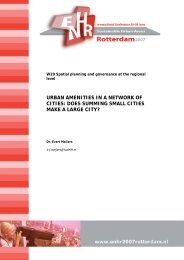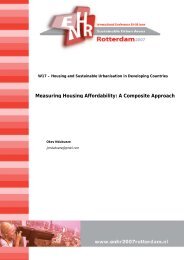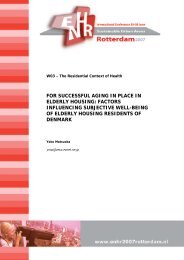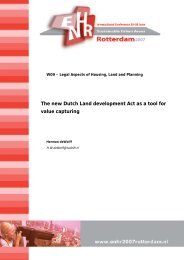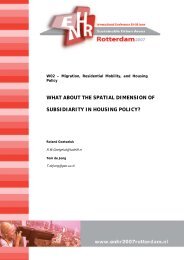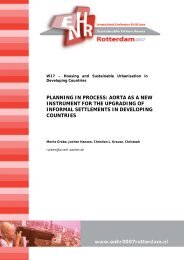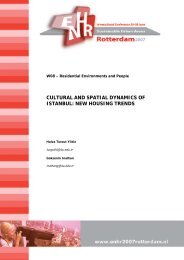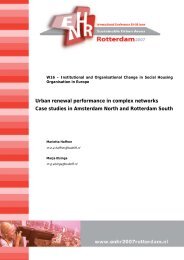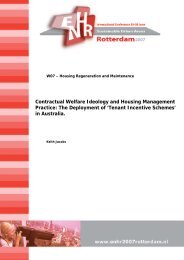Download - ENHR 2007 Rotterdam
Download - ENHR 2007 Rotterdam
Download - ENHR 2007 Rotterdam
Create successful ePaper yourself
Turn your PDF publications into a flip-book with our unique Google optimized e-Paper software.
REGENERATION OF URBAN AREAS IN CITIES OF TURKEYCASE STUDY: IZMITAss. Prof. Dr. Ali ULUAnadolu University, Faculty of Engineering and Architecture,Department of Architecture, Eskisehir, Turkey e-mail: alulu@anadolu.edu.trtel: 00- 90-222 321 35 50/ 6672AbstractIn 2005, the act was published “transformation of urban areas” for the reproduction of urbanareas where and how to plan and construct new housing for the 21st century in Turkey. The actset out the changes needed to the planning system and building regulations to regeneratesustainable urban plots into the housing areas. Since then, there have been major changes to theplanning and housing production system. The forthcoming implimentation for Sustainablesquatter and illegal hosing areas may also play an important part in raising environmentalstandards. Urban regeneration in housing areas seeks to transform to squatter and illegal housingat regional and local levels that need sustainable design and construction. Regeneration of urbansquatter or illegal established housing areas has been the central element of urban discussions inTurkey since the 1950s, with different approaches from clearance to upgrading with the aim ofdecreasing the negative effects of these areas in the urbanization process of Turkish cities untilthe 1980s. Following the 1980s however squatter housing areas, especially the ones located ininner-city areas have become the focus of attention with an increasing element of devaluation ofthe land market within the sphere of neo-liberal urban policies of the governments under theeffect of the new global economy. Municipalities which have squatter or illegal establishedhousing areas within their boundaries, use urban transformation and regeneration projects toimprove their living conditions and physical built environment with the standards of acontemporary life style while transforming these areas into prestige zones of their governmentalsuccess also by using the great economic potentials of centrality on space. Thus, while usingcommunity-based approaches to local regeneration to promote social inclusion, municipalitiesfind themselves in a global environment of the market economy with an unprecedented amountof capital flow into these areas both from the governments with new public programs and fromthe professional developers discovering the great potential of rent that is identified with the1



